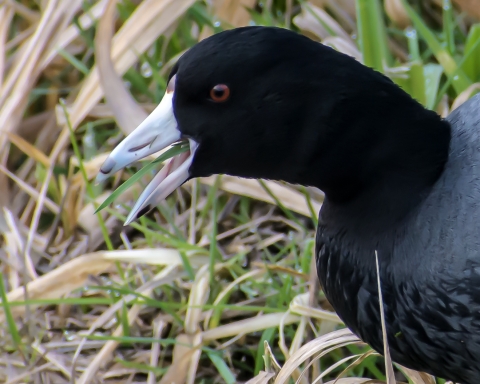Visitors love walking at Billy Frank Jr. Nisqually National Wildlife Refuge. This oasis of wildness is sandwiched between the state capital and a military base. We celebrate nature right alongside our visitors. But this place is not exactly natural.
Nature left to its own devices means rivers moving as they choose, free flowing and inclined to jump their banks. It means forests growing up where meadows once were, tides sweeping in and out, ponds filling in with brush and new ponds forming in the wake of rivers changing their curves. Nature means change.
Humans, on the other hand, like things to stay put, like boundaries. This sets up a challenge for our refuge. If we are to provide high quality habitat for ducks and geese within our property line, for example, we can’t just sit back and let nature take its course. Ponds and wetlands fill in over time and become brushy thickets, then maybe forests. But we want to have ponds and wetlands for the migrating waterfowl that pass through seasonally. And that means we have to be gardeners, of a sort.
Like most gardens, ours has weeds. In this case, that means reed canary grass, which is not native to Washington and can take over areas, forming into dense stands of tall grass that support very little wildlife. The reality of aggressive invasive species invasive species
An invasive species is any plant or animal that has spread or been introduced into a new area where they are, or could, cause harm to the environment, economy, or human, animal, or plant health. Their unwelcome presence can destroy ecosystems and cost millions of dollars.
Learn more about invasive species like this is that we will never be able to eradicate it. But we can learn to manage it. And one of our most useful tools is a tractor.
Maintenance Worker Bob Smith mows to shape a better environment for waterfowl. He begins mowing once the ground dries up enough in early summer. Mowing knocks back the grass and gives other plants a fighting chance. He carefully mows around patches of desirable plants, like Bidens (known as beggars-ticks or sticktight for its clinging seeds), Alisma (water plantain), and Persicaria (smartweed). These spread when we knock back the competition, each year spreading to more terrain, offering nutritious winter seeds to waterfowl.
Sometimes a more aggressive approach converts larger tracts to better habitat. Bob will disc up fields in need of treatment, discing repeatedly during the summer months. Exposing the roots of reed canary-grass to the drying sun kills the plants. Then smartweed, sticktight, and water plantain seeds can float in from nearby and colonize the open ground.
But even where the reed canary grass remains, it can be made more productive for waterfowl by mowing. Bob has found that tall standing grass hit by freezing weather becomes dense stands of dead material of little benefit to wildlife. But knocking it back to under 8 inches a couple of times before cold weather starts keeps the grass fresh and green through winter, attractive forage for geese and other wildlife.
The refuge has a new 155 horsepower tractor for mowing, and Bob reports that it may be just about perfect! It mows slowly enough to mulch the grass well. But even with an excellent piece of equipment, it takes six or seven passes to whack the grass back to the right level. That keeps not only Bob but Deputy Project Leader Kurt Roblek busy mowing.
In mid-September, Bob turns on the well pump to jump start the flooding process. With the well pumping and seasonal rains falling, water begins to slowly flood the fields, returning them to their winter status as wetlands. These seasonal wetlands are critical for migrating waterfowl. Not all wetlands are wet year-round. Visiting the refuge at different seasons reveals whole new vistas and different kinds of wildlife. Thanks to mowing, the wetlands are constantly rejuvenated, and the refuge remains a vital place for hundreds of species.




